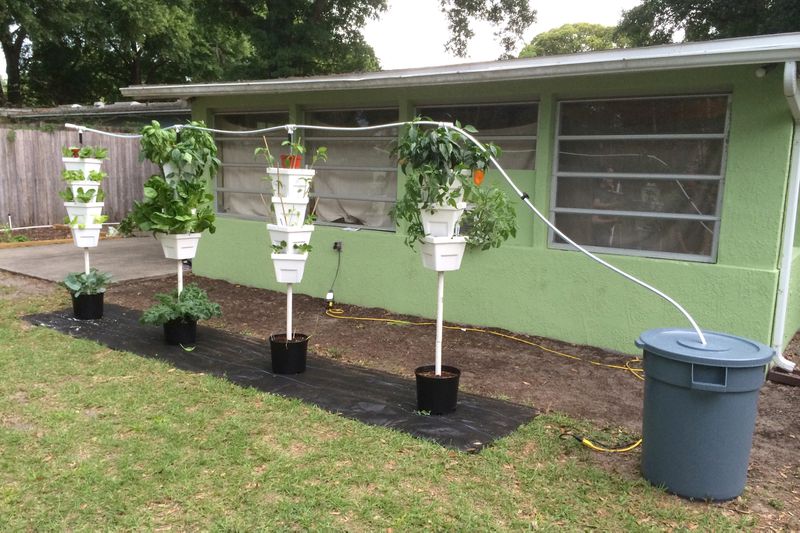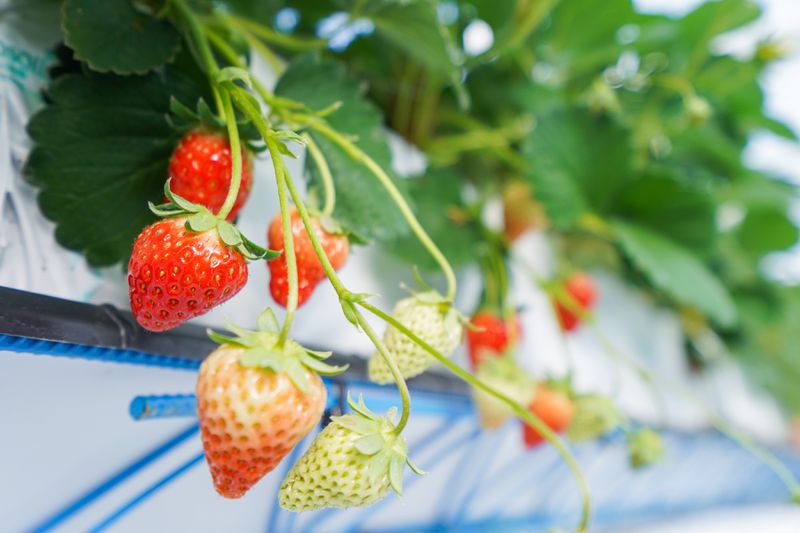All About Hydroponics

>

iStock
The basics of hydroponics explained—plus the pros and cons of gardening without soil.
What Is Hydroponics?
Hydroponics (hydro = water and ponics = working) uses water and nutrients to grow plants in various non-soil-based mediums such as sand, gravel, coir, and even wool. More simply, hydroponics is the practice of growing plants without soil.
Since the 17th century, researchers have been exploring soilless plant cultivation—though the word hydroponic wasn’t coined until 1937. By using a self-contained system to deliver what plants need—water, light, oxygen, and nutrients—the soil that typically supports the plant and helps deliver some of these life-sustaining must-haves is no longer necessary.
Types of Hydroponic Systems
There are two main categories of hydroponic systems: static and continuous flow, and variations within each:
Static systems
Wick System: Water and nutrients travel through a wick that connects the roots and nutrient solution, delivering what is needed to the plant. This method is ideal for herbs and vegetables that don’t need to take in lots of water.Deep Water Culture (DWC): The roots are submerged in water 24 hours a day, but sufficient oxygen is delivered through air pumps and air stones.
Continuous flow systems
Ebb and Flow: Plants are exposed to nutrients at intervals, flooding the system with the solution, soaking the roots, and then draining.Nutrient Film Technique (NFT): This system relies on the same principles as the ebb and flow technique, but rather than exposing the roots at various intervals, NFT offers a continuous, recirculating flow of nutrients.Aeroponics: Plants are suspended in the air and the roots are continuously sprayed with a nutrient-rich solution.Drip System: Like drip systems in landscaping, the same concept delivers the nutrients plants need in a slow drip. Ideal for growing larger vegetables and fruits like zucchini, pumpkins, and melons.
How Does Hydroponics Work?
All hydroponic systems are self-contained and follow the same basic premise. Whether you’re a countertop gardener or commercial grower, for a hydroponic system, you’ll need
A reservoir to hold the nutrients and waterA pump to distribute the nutrient solutionA way to support the plants
Hydroponics Gardening at Home

ASK Production TeamIf you’re interested in creating a hydroponics garden, first decide how much time, effort, and money you want to spend. If you have a little bit of all three, a DIY hydroponic garden is a great option—you can build one on a stand or even along a wall relatively inexpensively using PVC pipe. If dependable sunlight is going to be an issue inside, you’ll need to invest in a grow—a worthwhile investment for the ability to grow plants that yield edible produce year-round.
You can also buy a hydroponic system that comes with everything you need to get your garden started. While these tend to be pricey, they do reduce human error, can be set up in no time, and offer near-instant gratification. You can choose from small countertop versions to larger, floor-scale gardens, depending on your budget and space.
Best Plants for Hydroponics

iStockPlants have varying water and nutrient requirements. If you want to grow a specific type of plant, make sure the hydroponic system you choose can deliver the nutrients and water it needs. For example, drought-loving rosemary does well in systems that provide water and nutrients more passively, while water-thirsty plants will thrive in deep water cultures or ebb and flow systems. If you are going to grow different plants together, choose ones that have the same nutritional needs. Here are some types of plants that typically do well in hydroponic gardens and are great for the beginner:
Salad GreensHerbs (basil and mint do particularly well in hydroponic gardens)StrawberriesTomatoesPeppersCucumbersOf course, you don’t have to grow plants you plan to eat—you can also grow flowers hydroponically. These tend to yield consistently successful results:
PetuniasCarnationsFreesiaOrchidsDaffodilsPeace Lilies
The Pros and Cons of Hydroponic Gardening
Soilless planting isn’t foolproof, but there are many benefits to growing plants in a hydroponic system.
Pros
Even though the system requires water, it uses less water than soil-based systems.No weeding, sowing, or fertilizing is needed.Hydroponic gardening is particularly useful in climates or conditions with no plantable soil.Plants can be grown year-round.Plants grow faster and yield more produce in less time.Less space is required compared with traditional gardening.Less pest maintenance is required than with soil, which also results in reduced pesticide use.
Cons
The start-up costs can be high, and the system can be expensive to maintain.You cannot neglect plants for periods of time as you sometimes can with traditional gardening.You need to learn about the equipment and how the systems work for a successful yield.The hydroponic garden is often dependent on consistent electricity—blackouts or system failures could ruin the entire garden.You need to check for mold and waterborne diseases.You have to test the water regularly for pH balance and EC levels (conductivity) and make adjustments to maintain the correct balance—overcompensating may shock the plants and kill them.
Did you miss our previous article…
https://www.tampa-bay-homes-guide.com/?p=514
